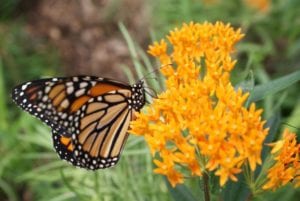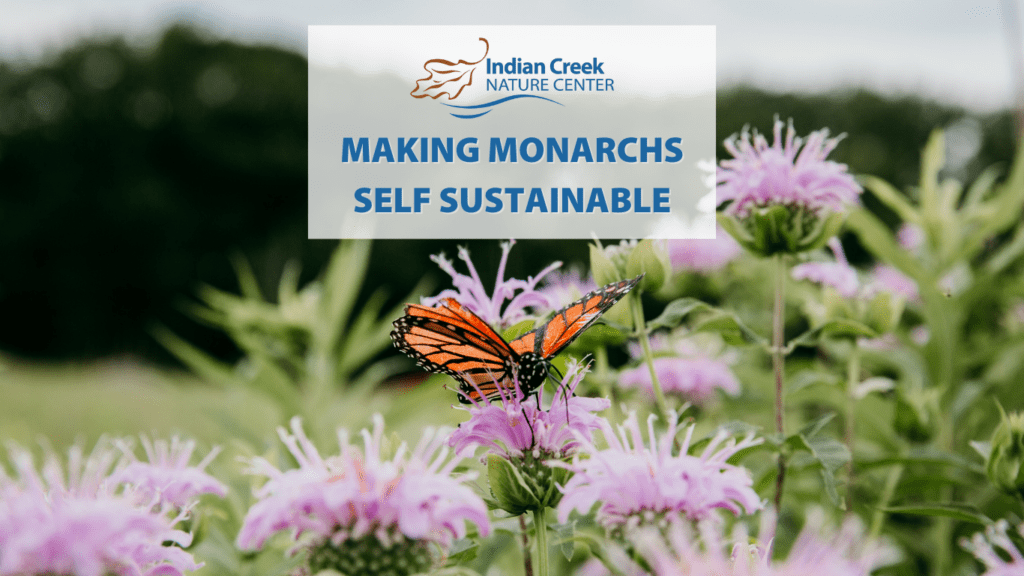Striving for a Self-Sustainable Monarch Population

The iconic western monarch butterfly, with its bold orange and black colors, has become the poster child for pollinators — and their struggles. Due to their ecological importance and their beauty, the monarch butterfly has inspired movements and organizations across North America working to protect their habitat and migration paths.
Despite all these efforts, the monarch butterfly is still struggling. The Xerxes Society conducts an annual count of monarch butterflies every year, and in 2023 found a 30 percent population decrease from the year before.
The drop from 335,479 in 2022 to 233,394 in 2023 can be partially explained by unusual weather patterns (like snowstorms in Texas) that can impact population levels from year to year. Even at the 2022 population level, monarchs would not be considered to be at a self-sustaining population size.
Annual counts of monarchs routinely reached into the millions as recently as the 1980s. According to the Western Monarch Conservation Plan, a fifty-year road map to restore western monarch butterfly populations, monarchs need to surpass a population of 500,000 annually for at least five years to be self-sustaining.
Ways to Help Monarchs

Monarchs, like many other pollinators, are essential links in our ecosystems that pollinate a wide variety of plants. These plants, and the monarchs, in turn are part of a natural food web that enables nature to thrive with their presence.
There are multiple ways you can help restore monarchs to a self-sustaining population:
- Plant milkweed: Monarch butterflies only have one plant on which they can lay their eggs — milkweed. Milkweed is the only food source for monarch caterpillars, and without it they have no habitat. Milkweed is easy to plant, and many people even consider them ornamental. Anyone with a yard can plant milkweed within a pollinator-friendly mini prairie.
- Support Habitat Restoration: There are many organizations, including Indian Creek Nature Center, that strive to protect and restore the grassland habitat monarchs rely on. In Iowa, more than 99% of the prairie land has been lost to development. Each acre that is protected or restored provides a vital lifeline to our struggling pollinators.
- Chemical-free lawns: Applying pesticides and herbicides to a household’s lawn is detrimental to monarchs, other pollinators, and the food sources they need to flourish. As more people move away from monoculture lawns (consisting of only grass), the more safe havens monarchs have to lay eggs and increase their population.
- Celebrate at Monarch Fest: Visitors to our family-friendly celebration of pollinators can make milkweed seed balls, adopt a monarch caterpillar, learn from local experts, and enjoy two butterfly releases. These actions help monarchs today while helping the next generation of earth stewards fall in love with monarchs.

